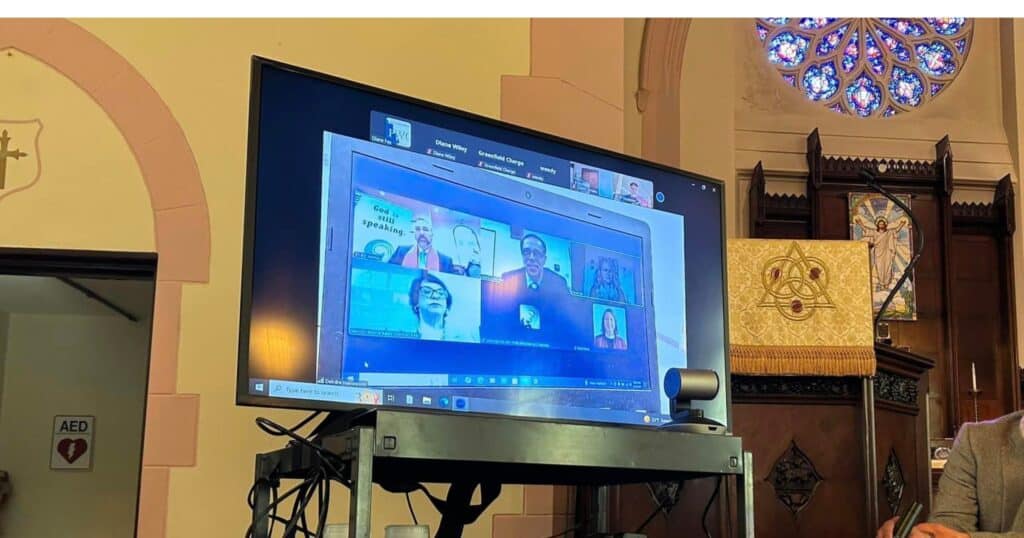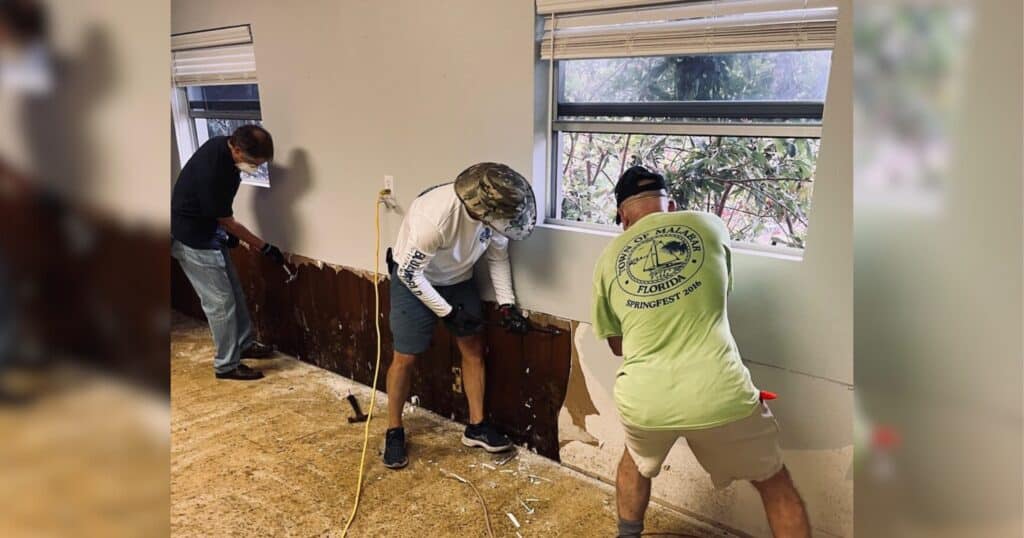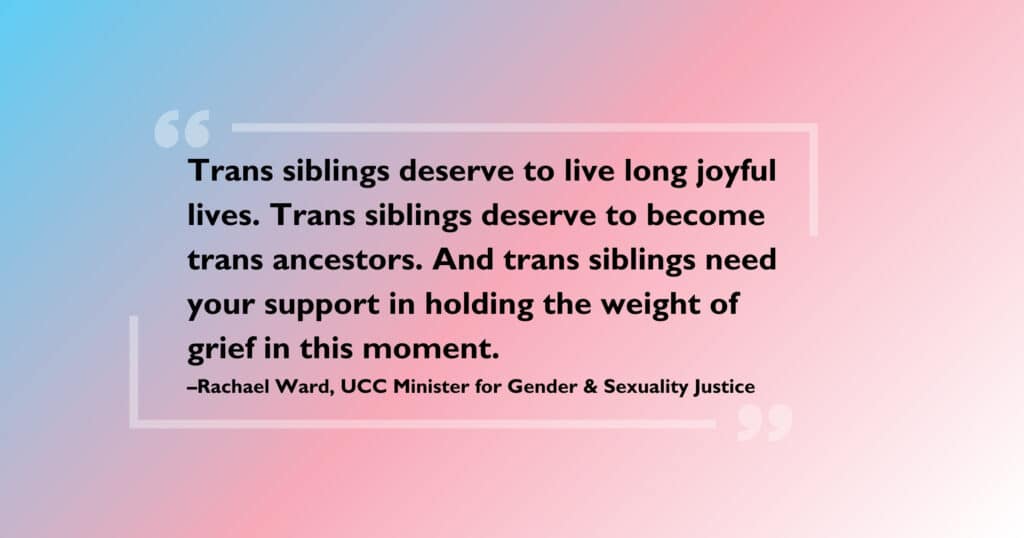Out of the Maui wildfire ashes, signs of new life emerge
Wildfires set Maui ablaze on Aug. 8, 2023, destroying thousands of acres and structures and claiming more than a hundred lives. Lahaina, a historic whaling village that was once the capital of Hawaii, experienced the worst damage. The cost to rebuild is steep, with the Federal Emergency Management Agency (FEMA) estimating the total to be $5.5 billion. Equally steep is the number of years that rebuilding will take.
In early June, the United Church of Christ’s General Minister and President Rev. Karen Georgia Thompson, along with members from the national office, visited Maui to see the aftermath firsthand. Thompson found the experience “heartbreaking.”
“I visited Maui in 2021 and had those memories fresh for comparison as I walked down the main street in Lahaina,” she said.
“The work to clear debris and address short-term needs continues. Food, water and housing continue to be primary concerns for individuals who have been displace by the fires,” she added.
Still feeling the heat
Accompanying Thompson was the Rev. James Fouther, Jr., western region generosity officer for the UCC’s Philanthropy team, who described what he saw as “surreal.”
“I could still feel the heat from the fires,” he said. “It is going to take years for Maui to come back.”
Fouther expressed deep gratitude for the generosity of donors who gave to the UCC Hawaii wildfire appeal that was issued by the Global H.O.P.E. team shortly after the disaster happened. These monies, he says, have helped “so much already,” and will continue helping in the long-term recovery efforts.
“We can’t lose sight of the importance of long-term recovery as the challenges of food insecurity and the overcrowding of housing will be ongoing,” he said.
Graveyard illustrates life among the dead
Walking among the storied headstones of Lahaina’s Waine’e Cemetery — also known as the Waiola Cemetery — one can almost hear Isaiah’s words whispering in the breeze: Behold, I am doing a new thing … do you not perceive it? (Isaiah 43:19)
The cemetery — adjacent to Waiola United Church of Christ — is one of Hawaii’s first Christian burial grounds and the resting place for the early members of Hawaii’s royal family. It is also one of the few places unscathed amid the charred rubble that was once Lahaina’s picturesque district.
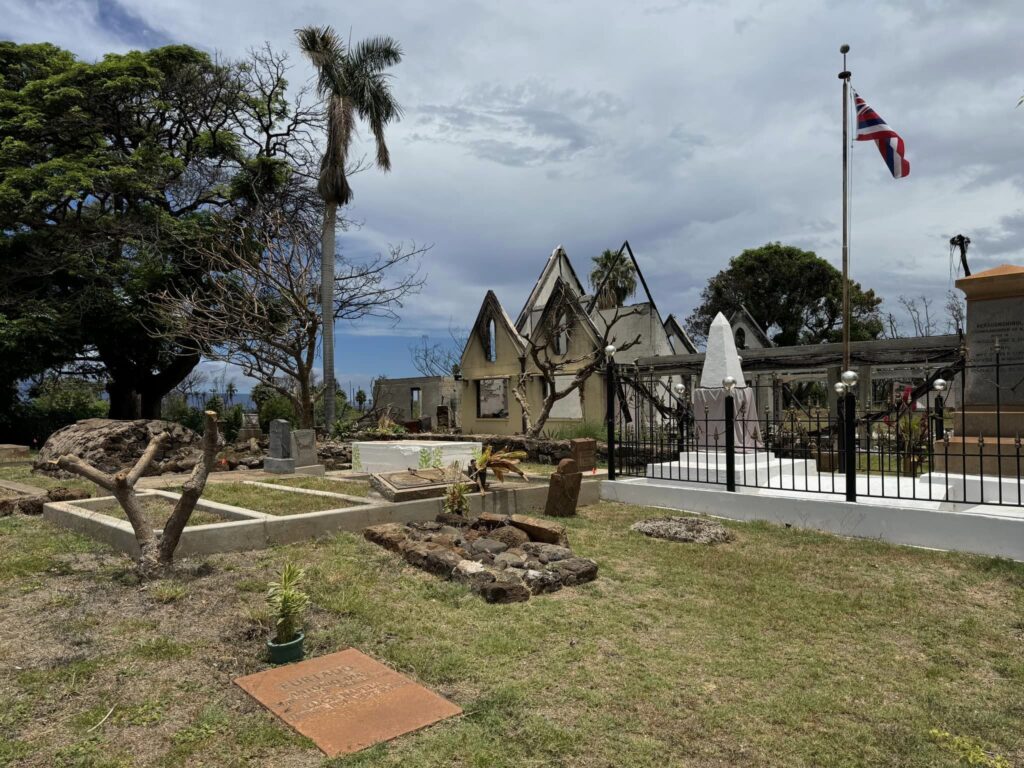
“Waiola Church’s historical graveyard somehow escaped the fire,” said the Rev. David Popham, conference minister for the Hawaii Conference of United Church of Christ in Honolulu. The church building did not.
While Lahaina remains closed to the public — “it is still a dangerous place to be in,” said Popham, he, Thompson and other UCC delegates, were allowed access and visited with members of the Waiola Church, listening to their stories.
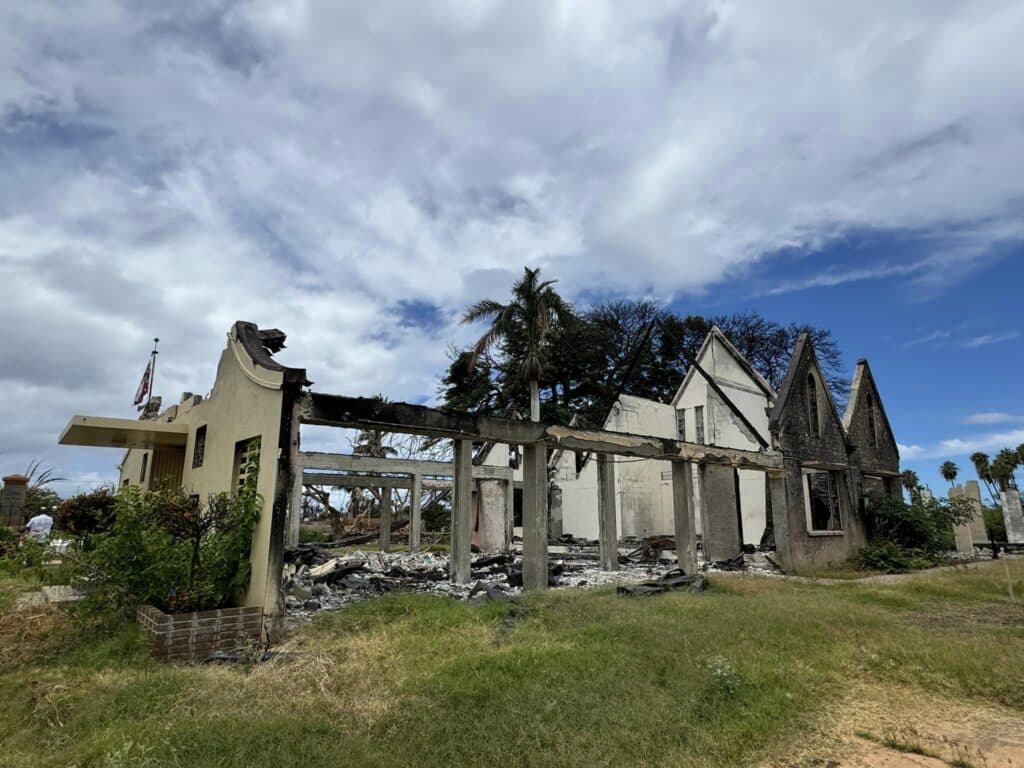
“The Hawaiian culture is an oral culture. For these folk to be able to tell their stories to someone in an honorable position such as Thompson’s was huge,” said Popham. “We talk about the covenantal connection in the UCC. Thompson’s visit strengthened that connection, sending the message that ‘we are with you in the struggle of grief and in the hope of recovery.’”
And it was in graveyard, by the headstone of Queen Keōpūolani, that Popham noticed a sign of hope, even perhaps that “new thing” scripture promises.
During the visit, the group stopped to place leis at the resting place of the queen — who is known for being instrumental in the spreading of Christianity, as well as putting an end to the practice of multiple spouses among royal members.
Popham explained that Hawaiians believe that one’s spiritual essence, known as mana, is in the bones of the deceased, so Thompson prayed for the queen’s spiritual essence to provide the strength needed for the rebuilding of the Lahaina community. Afterwards, Thompson took water and poured it onto the grass.
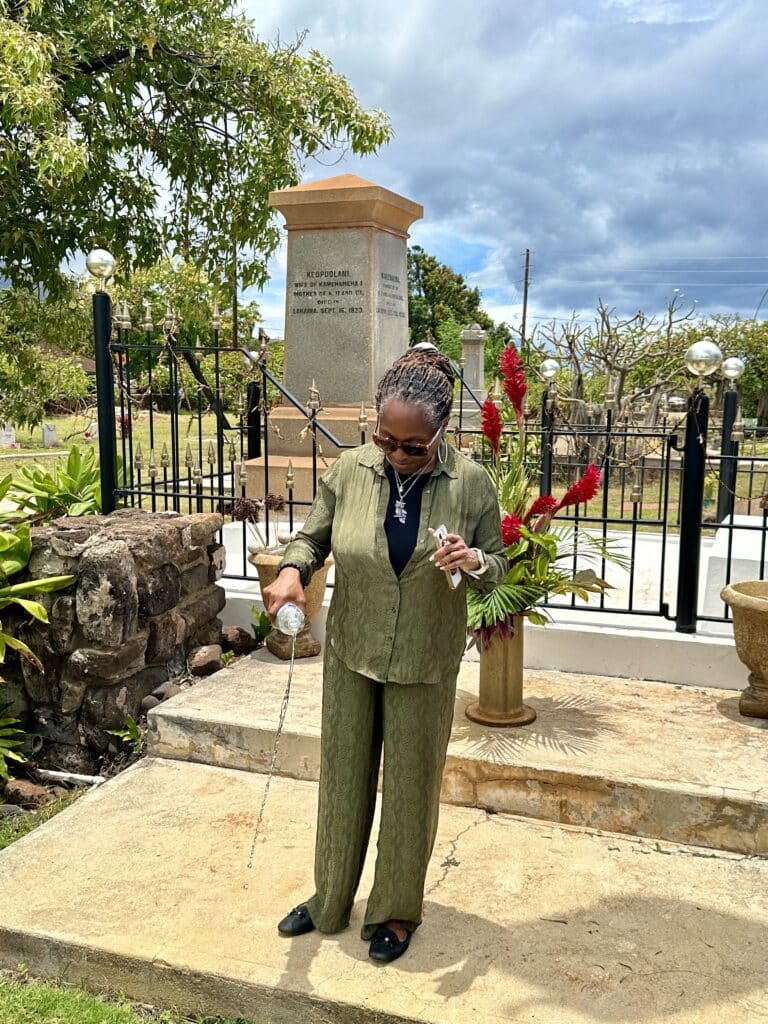
“Personally, to watch the water soak into the grass that was parched because it has been dry was a moving moment,” said Popham.
Thompson was also moved by the signs of hope she noticed — flowers blooming in the ruins, leaves springing from burnt trees and people helping people.
“Seeing the ruins of the church and listening to the plans for rebuilding was also both challenging and beautiful,” said Thompson. “The members of the church we met with spoke of the ministries of the church and their desire to have the church present in the community for years to come, building on the vision of the Ancestors for generations to come, in love.”
Maui was just one of the stops for Thompson, who described her trip as a “four-fold opportunity to be present with the church in a variety of ways,” which included attending the 202nd Aha Pae‘āina, the Hawaii Conference’s annual meeting (watch video highlights here); preaching at a local congregation; and, celebrating the 50th anniversary of the Pacific Islander & Asian American Ministries (PAAM) at its convocation.
“Each of these was an opportunity to be present with the church in a variety of ways, to hear the concerns, to cast vision and to be pastoral presence amidst the challenges and response to the fires in Maui,” said Thompson.
Content on ucc.org is copyrighted by the National Setting of the United Church of Christ and may be only shared according to the guidelines outlined here.
Related News
All four Pennsylvania conferences pass motion toward one combined conference
On Nov. 9, each of the four United Church of Christ conferences in Pennsylvania passed the...
Read MoreFlorida UCC churches organize helping hands in wake of recent hurricanes
The gulf coast of Pinellas County, Florida recently suffered a destructive double whammy...
Read MoreCommentary: Honoring queer lives, remembering trans siblings lost
This week marks Transgender Day of Remembrance (TDOR), an annual time of mourning and honoring...
Read More
